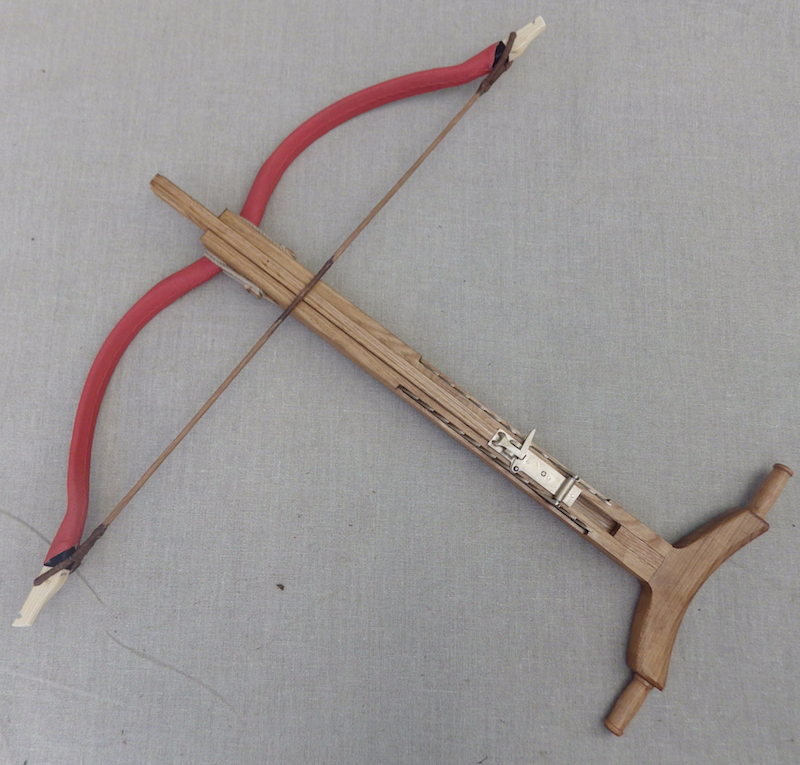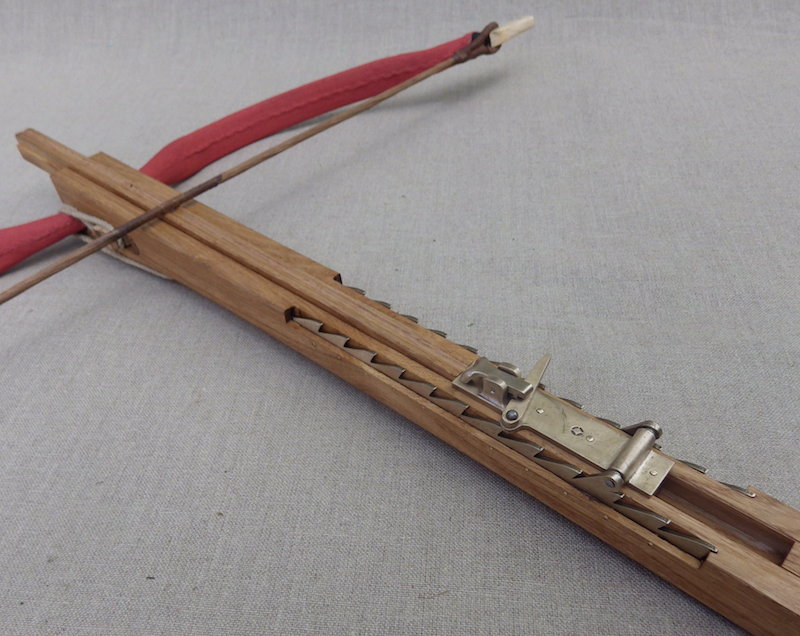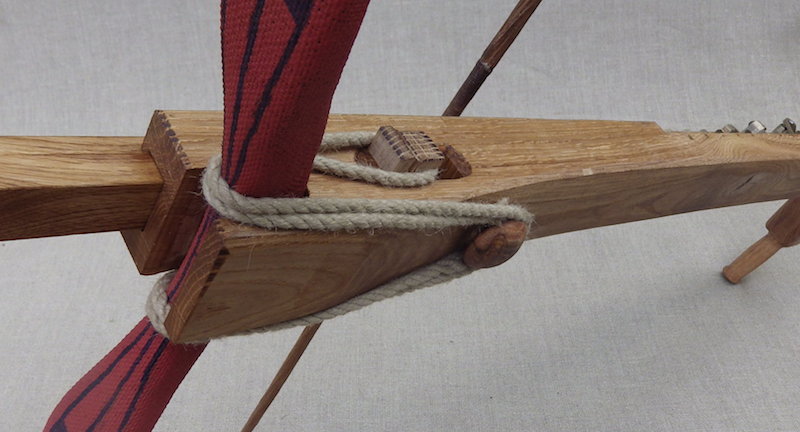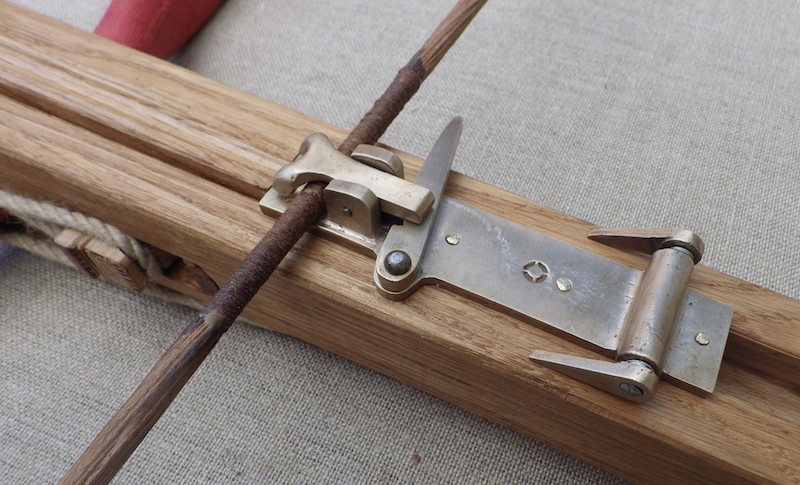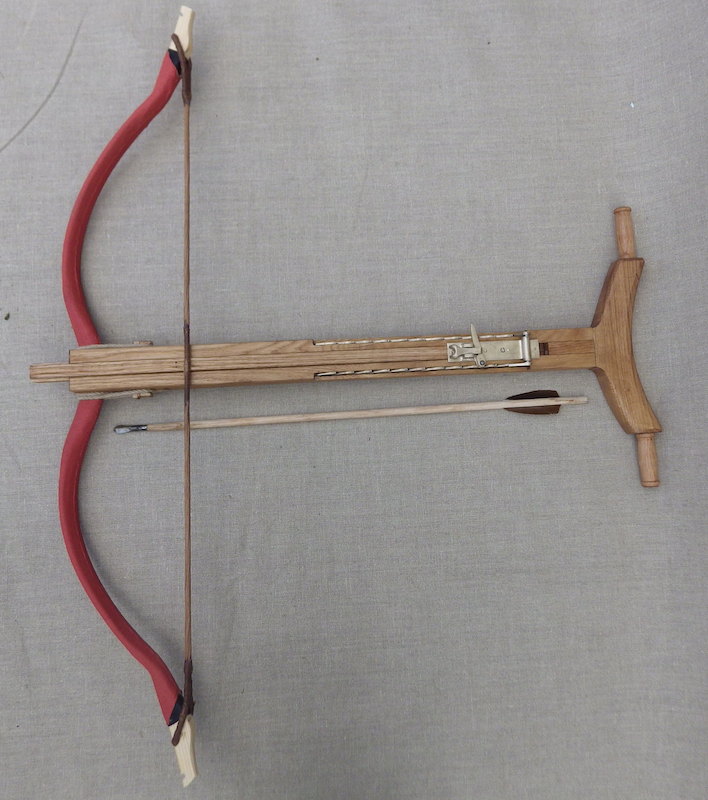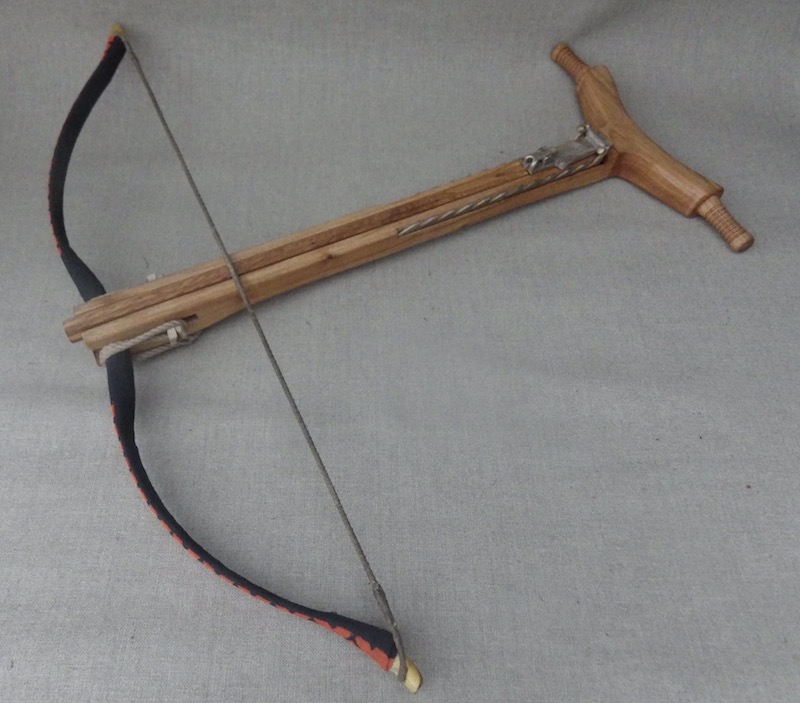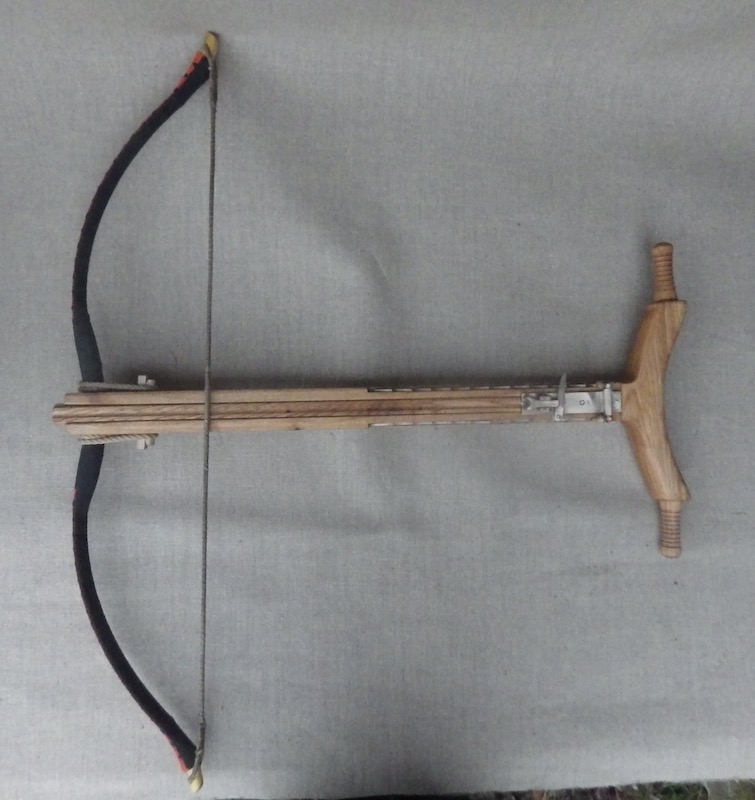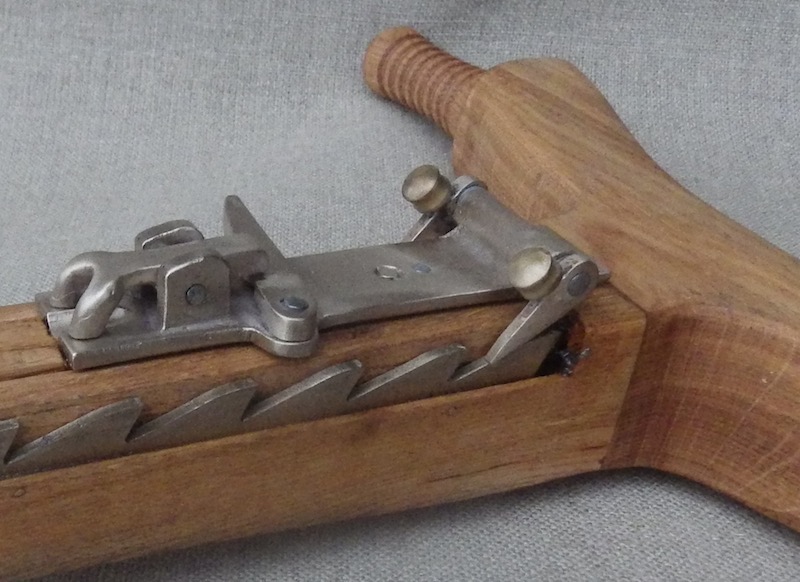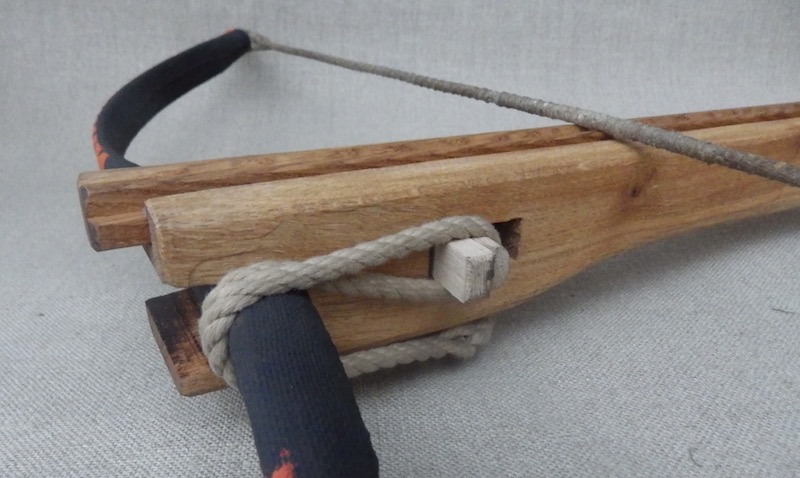The evidence for these is rather scant and I suspect Dan Howard will know much more, but this is my interpretation of one.
It is loaded quite differently to a conventional crossbow and shares many similarities with Greek and Roman torsion artillery with the very notable exception that the bow is of a conventional type rather than torsion. It is loaded by rotating the pawls on the side of the trigger block away from the teeth on the stock. The slide is then pushed forward until the string engages with the fork. The fork is locked with the trigger bar, the pawls are rotated forward and then the user leans forward on the bow so that the slide pushes against the ground and the string is pushed back until the pawls engage with the teeth. The bow is then lifted so that the curved bar rests against the belly and is shot.
Both the method of loading, by pushing down on the bow by leaning on it and the raising of the bow to the stomach to shoot presumably lead to the name ‘Gastrophetes’ which means ‘belly bow’.
This was a complicated reproduction for me as much as there not really being one to copy and that it was rather technical, but was very interesting none the less. I will be posting up a video in due course showing being shot.
The bow in this instance is in fact a fibreglass horse bow made by Kassai and is 110lb, but with the very fast nature of these bows and the long draw length make this a very powerful bow indeed. The bow was shortened and covered in painted linen to hide its origins and fitted with a linen string. For want of any further information the string was made like medieval crossbow strings. The original bows were presumably composite and displayed this recurved form.
The stock is seasoned oak and all the trigger and teeth parts are bronze.
There is (as far as I know) no information on how the bow was secured to the stock and so I have opted for lashing which I feel is the most likely; allied to this I wanted to make the bow removable for easy modern life. With this in mind I used a lashed and wedged system that I conceived for this bow. Whether they were like this I have no idea, but it fixes the bow, make it removable and the Greeks certainly used opposing wedges for tightening the bundles on their torsion artillery so it was a system that would have been open to them and understood, even if not used.
I hope you like it - I love it!
The stock is oak
